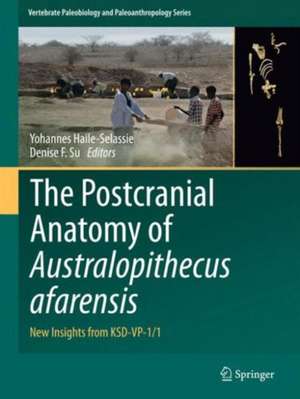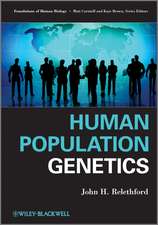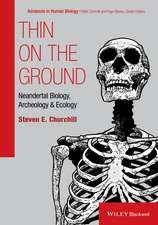The Postcranial Anatomy of Australopithecus afarensis: New Insights from KSD-VP-1/1: Vertebrate Paleobiology and Paleoanthropology
Editat de Yohannes Haile-Selassie, Denise F. Suen Limba Engleză Hardback – 6 ian 2016
| Toate formatele și edițiile | Preț | Express |
|---|---|---|
| Paperback (1) | 699.77 lei 6-8 săpt. | |
| SPRINGER NETHERLANDS – 31 mar 2018 | 699.77 lei 6-8 săpt. | |
| Hardback (1) | 599.25 lei 38-44 zile | |
| SPRINGER NETHERLANDS – 6 ian 2016 | 599.25 lei 38-44 zile |
Din seria Vertebrate Paleobiology and Paleoanthropology
- 15%
 Preț: 717.13 lei
Preț: 717.13 lei -
 Preț: 314.69 lei
Preț: 314.69 lei - 15%
 Preț: 724.12 lei
Preț: 724.12 lei - 18%
 Preț: 738.34 lei
Preț: 738.34 lei - 18%
 Preț: 741.37 lei
Preț: 741.37 lei - 15%
 Preț: 719.39 lei
Preț: 719.39 lei - 18%
 Preț: 635.90 lei
Preț: 635.90 lei -
 Preț: 411.04 lei
Preț: 411.04 lei - 20%
 Preț: 606.43 lei
Preț: 606.43 lei -
 Preț: 392.60 lei
Preț: 392.60 lei - 20%
 Preț: 617.45 lei
Preț: 617.45 lei - 15%
 Preț: 650.19 lei
Preț: 650.19 lei -
 Preț: 397.38 lei
Preț: 397.38 lei - 20%
 Preț: 619.33 lei
Preț: 619.33 lei -
 Preț: 391.27 lei
Preț: 391.27 lei -
 Preț: 431.73 lei
Preț: 431.73 lei -
 Preț: 433.47 lei
Preț: 433.47 lei - 24%
 Preț: 715.30 lei
Preț: 715.30 lei -
 Preț: 449.63 lei
Preț: 449.63 lei - 24%
 Preț: 763.00 lei
Preț: 763.00 lei - 15%
 Preț: 715.31 lei
Preț: 715.31 lei - 24%
 Preț: 636.35 lei
Preț: 636.35 lei - 20%
 Preț: 631.43 lei
Preț: 631.43 lei - 18%
 Preț: 792.19 lei
Preț: 792.19 lei -
 Preț: 380.72 lei
Preț: 380.72 lei - 20%
 Preț: 604.45 lei
Preț: 604.45 lei - 15%
 Preț: 708.75 lei
Preț: 708.75 lei -
 Preț: 404.29 lei
Preț: 404.29 lei - 24%
 Preț: 645.20 lei
Preț: 645.20 lei -
 Preț: 383.94 lei
Preț: 383.94 lei - 18%
 Preț: 898.13 lei
Preț: 898.13 lei -
 Preț: 403.75 lei
Preț: 403.75 lei
Preț: 599.25 lei
Preț vechi: 788.48 lei
-24% Nou
Puncte Express: 899
Preț estimativ în valută:
114.68€ • 118.47$ • 95.44£
114.68€ • 118.47$ • 95.44£
Carte tipărită la comandă
Livrare economică 21-27 martie
Preluare comenzi: 021 569.72.76
Specificații
ISBN-13: 9789401774277
ISBN-10: 9401774277
Pagini: 191
Ilustrații: XI, 191 p. 106 illus., 82 illus. in color.
Dimensiuni: 210 x 279 x 19 mm
Greutate: 0.69 kg
Ediția:1st ed. 2016
Editura: SPRINGER NETHERLANDS
Colecția Springer
Seria Vertebrate Paleobiology and Paleoanthropology
Locul publicării:Dordrecht, Netherlands
ISBN-10: 9401774277
Pagini: 191
Ilustrații: XI, 191 p. 106 illus., 82 illus. in color.
Dimensiuni: 210 x 279 x 19 mm
Greutate: 0.69 kg
Ediția:1st ed. 2016
Editura: SPRINGER NETHERLANDS
Colecția Springer
Seria Vertebrate Paleobiology and Paleoanthropology
Locul publicării:Dordrecht, Netherlands
Cuprins
Introduction to KSD-VP-1/1: The earliest partial skeleton of Australopithecus afarensis.- The Geologic Context of Korsi Dora and the Partial Skeleton KSD-VP-1/1.- The Taphonomy and Paleoecology of Korsi Dora Vertebrate Locality 1, Woranso-Mille Study Area, Ethiopia.- KSD-VP-1/1: Analysis of the Postcranial Skeleton Using High-Resolution Computed Tomography.- The Cervical Vertebrae of KSD-VP-1/1.- The Shoulder Girdle of KSD-VP-1/1.- The Thoracic Cage of KSD-VP-1/1.- The Pelvic Girdle and Limb Bones of KSD-VP-1/1.- Conclusion: Implications of KSD-VP-1/1 for Early Hominin Paleobiology and Insights into the Chimpanzee/Human Last Common Ancestor.
Notă biografică
Dr. Yohannes Haile-Selassie is curator and head of Physical Anthropology at The Cleveland Museum of Natural History. His main area of research is Plio-Miocene mammalian evolution with a focus on the origin of the earliest hominins and the evolutionary history of early Australopithecus. He is also principal investigator of an active fieldwork project in Ethiopia, the Woranso-Mille paleontological project. Scientists from Ethiopia, Europe, and various institutions in the United States collaborate on a variety of subdisciplines of geology and paleontology. His collaborative fieldwork is shedding new light on the diversity and relationships among the earliest Australopithecus species and evolution of numerous extinct and extant mammalian taxa. As a member of the Middle Awash project (1993 – 2007), Haile-Selassie has discovered some of the most important hominin fossils known to science. Among these are the holotype of the 2.5 million-year-old Australopithecus garhi, the first pieces of the 4.4 million-year-old Ardipithecus ramidus partial skeleton, nicknamed "Ardi," and fossil remains of the 5.8 million-year-old Ardipithecus kadabba. He has recently co-edited a monograph on the latter species, which he named in 2001. Haile-Selassie is a fellow of the American Association for the Advancement of Science, and fellow of the Institute for the Science of Origins at Case Western Reserve University. He is also adjunct professor in the Departments of Anthropology, Anatomy, and Cognitive Sciences at Case Western Reserve University, where he teaches human evolution course.
Dr. Denise Su is the Curator of Paleobotany and Paleoecology at the Cleveland Museum of Natural History. Her main area of research is the paleoecology of early hominins; she seeks to better understand the environmental context in which early hominins evolved to better address origination, extinction and adaptation events in our lineage. She conducts fieldwork at Laetoli, Tanzania, an important Pliocene hominin site where footprint trails of Australopithecus afarensis was discovered in 1976 and has reconstructed its paleoecological conditions using multi-evidential approach. She has also studied the paleoecology of other key early hominin localities, such as Aramis and West Margin of the Middle Awash, where Ardipithecus ramidus and Ardipithecus kadabba were recovered, respectively.
Textul de pe ultima copertă
This volume describes a 3.6 million-years-old partial skeleton of Australopithecus afarensis from the Woranso-Mille, central Afar, Ethiopia. This specimen is the first adult partial skeleton to be recovered since Lucy’s (A.L. 288-1) discovery in 1974. It is older than Lucy by 400,000 years and sheds light on the paleobiology of earlyAustralopithecus afarensis, particularly the morphology of the shoulder girdle and thoracic shape, which are thus far poorly understood and actively debated. The fauna associated with the partial skeleton tells us enormously about Au. afarensis paleoecology and give us another piece of the puzzle regarding habitat availability and use for Au. afarensis outside the Hadar region where it has been well-known for the last four decades.
Caracteristici
Comprehensive investigation and description of functional morphology of KSD-VP-1/1 or Kadanuumuu ("Big Man"), a 3.6 million-years-old partial skeleton of early Australopithecus afarensis Enables readers to gain an overview of the paleobiology and paleoecology of early Au. afarensis Will appeal to advanced researchers, educators, undergraduate and graduate students of paleoanthropology Includes supplementary material: sn.pub/extras


















